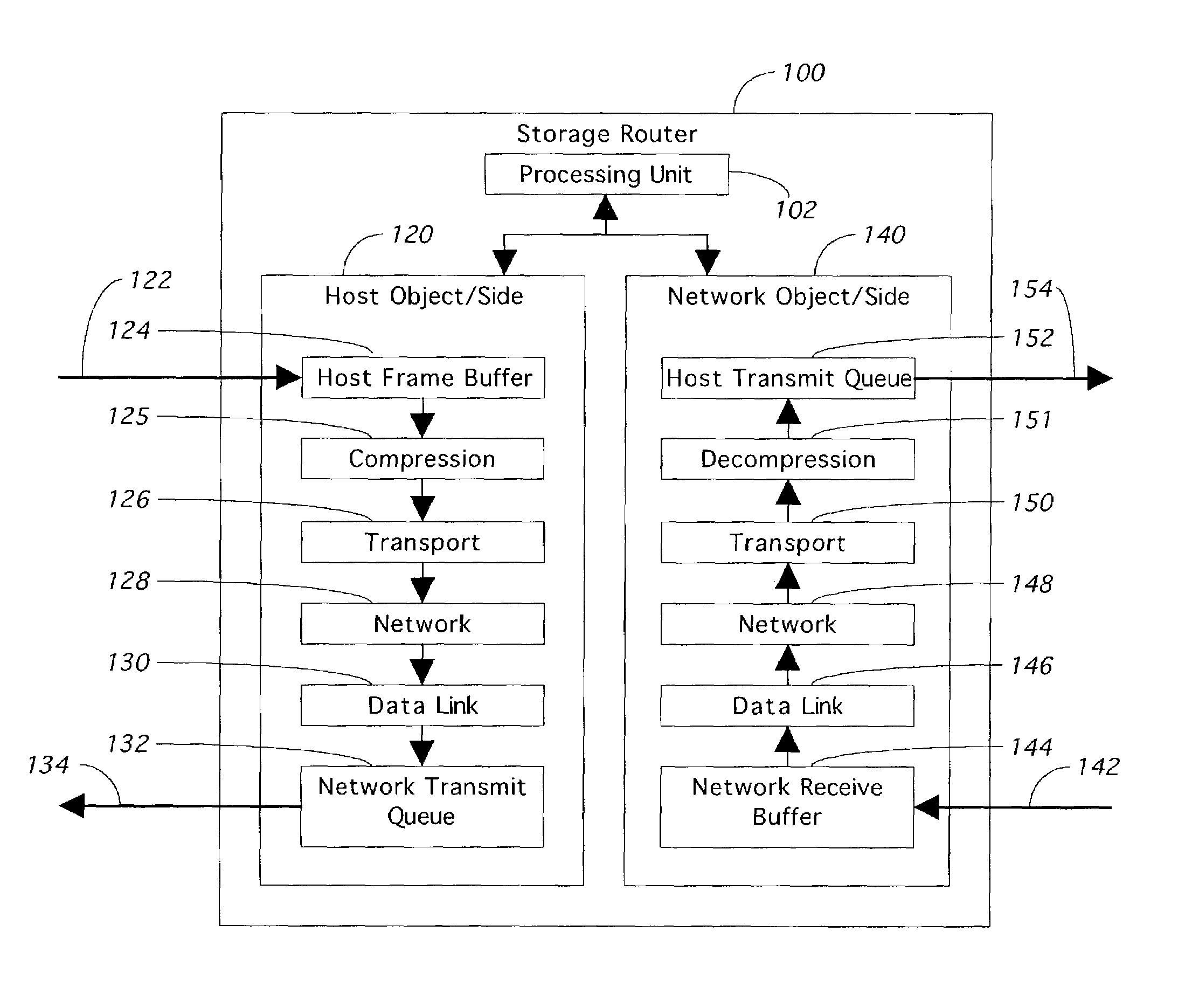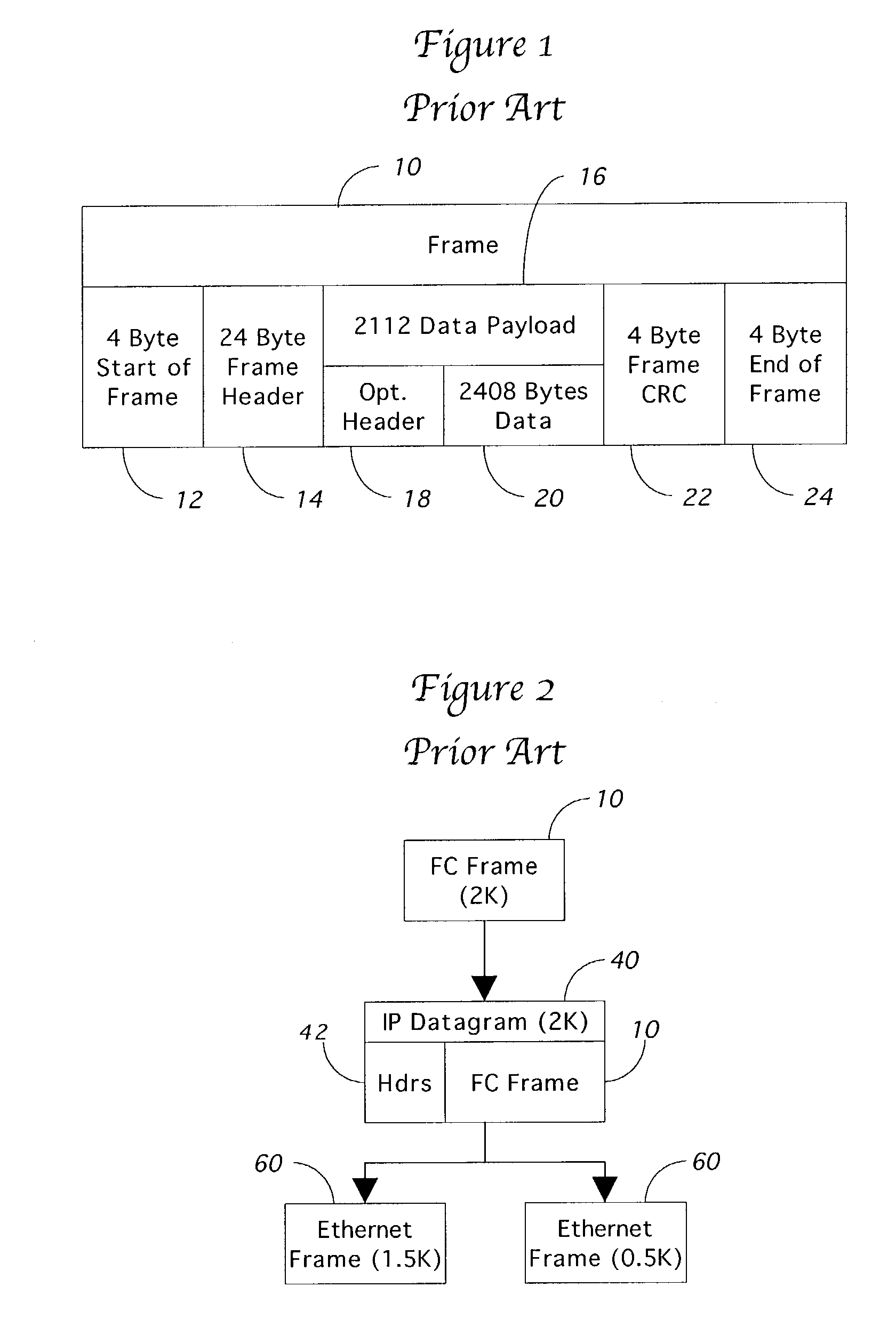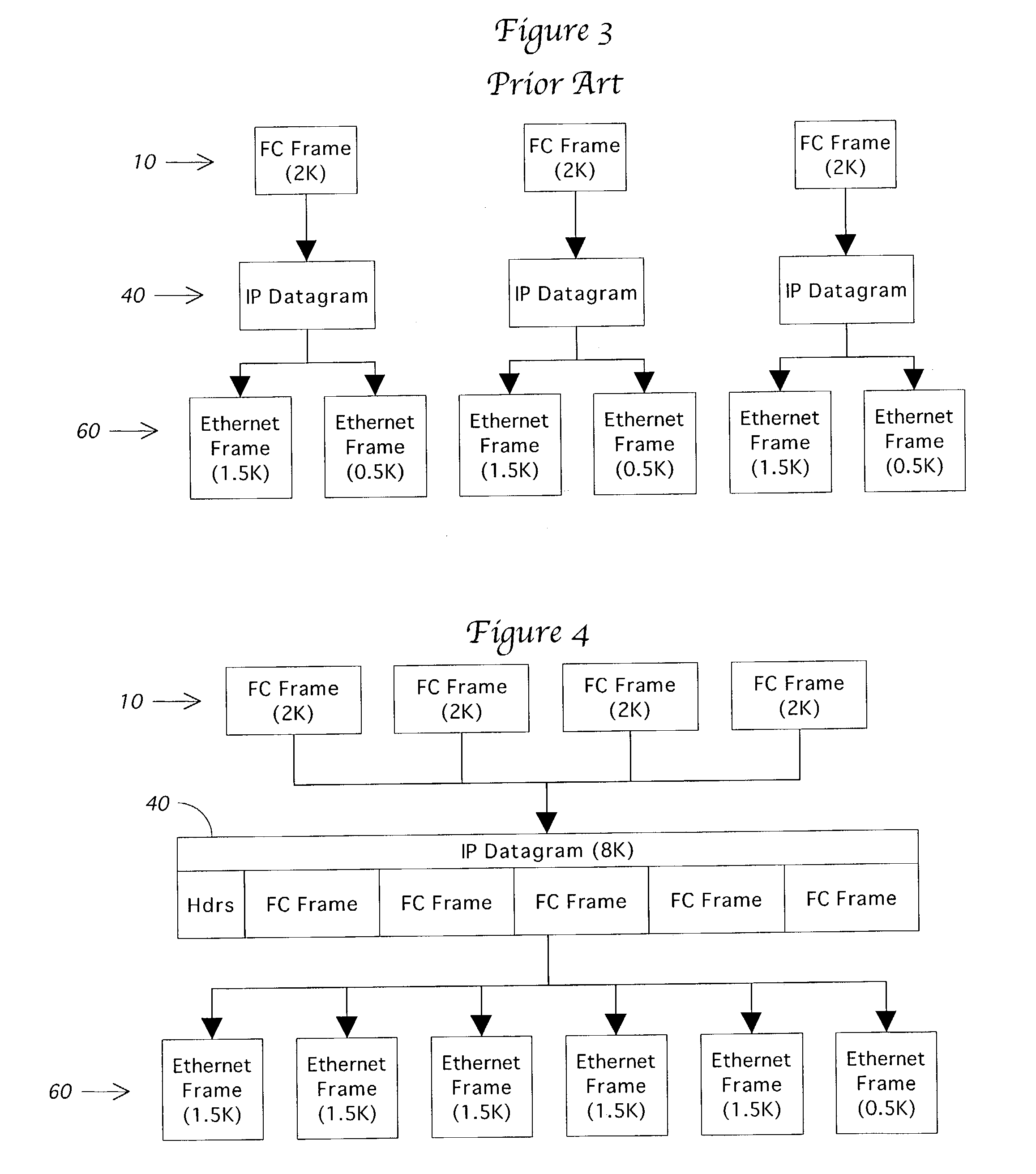Frame batching and compression for IP transmission
- Summary
- Abstract
- Description
- Claims
- Application Information
AI Technical Summary
Benefits of technology
Problems solved by technology
Method used
Image
Examples
Embodiment Construction
Frame Batching
[0026]FIG. 4 shows how the present invention avoids the inefficiency of prior art FCIP implementations through the use of frame batching. In the present invention, it is not necessary to embed each Fibre Channel frame 10 into a separate IP datagram 40. Instead, multiple Fibre Channel frames 10 are stored in a buffer when received and then combined into a single IP datagram 40. Since an IP datagram can contain 65535 bytes according to RFC 791 (IPv4), it would be possible to combine up to 31 2112 byte Fibre Channel frames 10 into a single IP datagram 40, even without compression.
[0027]In FIG. 4, four Fibre Channel frames 10 each having approximately 2 KB of data are combined into a single IP datagram 40. Since this datagram 40 contains approximate 8 KB of data, it is necessary to fragment this datagram into multiple Ethernet frames 60. In particular, six Ethernet frames 10 will be used to transmit the 8 KB of data received in the four Fibre Channel frames 10. Thus, even ...
PUM
 Login to View More
Login to View More Abstract
Description
Claims
Application Information
 Login to View More
Login to View More - Generate Ideas
- Intellectual Property
- Life Sciences
- Materials
- Tech Scout
- Unparalleled Data Quality
- Higher Quality Content
- 60% Fewer Hallucinations
Browse by: Latest US Patents, China's latest patents, Technical Efficacy Thesaurus, Application Domain, Technology Topic, Popular Technical Reports.
© 2025 PatSnap. All rights reserved.Legal|Privacy policy|Modern Slavery Act Transparency Statement|Sitemap|About US| Contact US: help@patsnap.com



